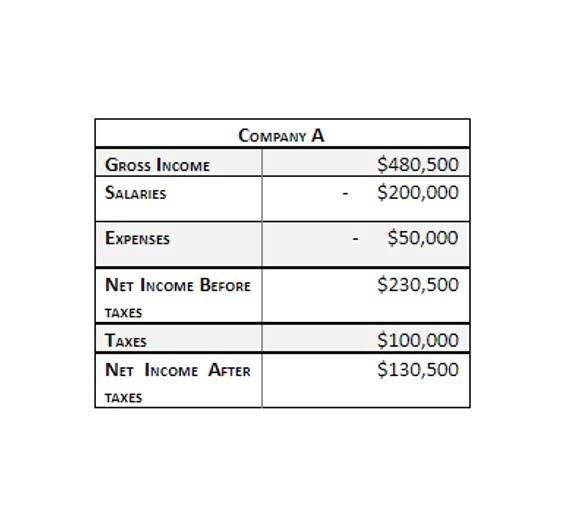Start with a free account to explore 20+ always-free courses and hundreds of finance templates and cheat sheets. If the outcome of this lawsuit is unfavorable, it could hurt Smart Touch Learning by increasing its liabilities. Therefore, it would be unethical to withhold knowledge of the lawsuit from investors and creditors. IBM SPSS Statistics offers advanced statistical analysis, a vast library of machine learning algorithms, text analysis, open-source extensibility, integration with big data and seamless deployment into applications.
Do you own a business?
If the contingency is less likely to occur or the amount in dispute cannot be reasonably estimated, then no liability would be recorded. A gain contingency refers to an uncertain situation that could result in an economic gain for a company if a future event occurs. According to accounting principles, companies are not allowed to record gain contingencies until the gain is realized or realizable. The plan may also include standing policies to mitigate a disaster’s potential impact, such as requiring employees to travel separately or limiting the number of employees on any one aircraft.
Treatment of Commitments and Contingencies as per GAAP
Modern predictive analytics can empower your business to augment data with real-time insights to predict and shape your future. The question to be resolved is what kind of treatment should be provided if the loss confirmation is probable and the amount can be reasonably estimated. It should be noted that liability is recognized even though there is no actual legal claim until the consumers return the goods. The objective of the requirement is to prevent the exclusion of losses and liabilities simply because the details are not yet known with certainty.
Hey, Did We Answer Your Financial Question?
That is the best estimate of the amount that an entity would rationally pay to settle the obligation at the balance sheet date or to transfer it to a third party. Under U.S. GAAP, if there is a range of possible losses but no best estimate exists within that range, the entity records the low end of the range. That is a subtle difference in wording, but it is one that could have a significant impact on financial reporting for organizations where expected losses exist within a very wide range. The determination of whether a contingency is probable is based on the judgment of auditors and management in both situations. This means a contingent situation such as a lawsuit might be accrued under IFRS but not accrued under US GAAP. Finally, how a loss contingency is measured varies between the two options as well.
When should I disclose contingencies on my financial statements?
- This content is for general information purposes only, and should not be used as a substitute for consultation with professional advisors.
- Contingencies are potential liabilities that might result because of a past event.
- The accounting rules for reporting a contingent liability differ depending on the estimated dollar amount of the liability and the likelihood of the event occurring.
- These models categorize data based on historical data, describing relationships within a given dataset.
The disclosure of an “unasserted claim” when it appears “probable that a claim will be asserted and there is a reasonable possibility that the outcome will be unfavorable.” When no particular amount within the range is thought to be more likely than any other, the firm should record the loss as the minimum figure in the range. There are six categories of contingencies in accordance with the uncertainties about confirmation and amount. If it is anticipated that the final effect of a contingency will be a loss, the form of the disclosure depends on the perceived likelihood of confirmation. For the past 52 years, Harold Averkamp (CPA, MBA) hasworked as an accounting supervisor, manager, consultant, university instructor, and innovator in teaching accounting online.
Probable but Not Estimable Contingencies
Doing so might lead a reader of the financial statements to conclude that a gain would be realized in the near future. A potential loss resulting from a past event that must be recognized on an entity’s financial statements if it is deemed probable and the amount involved can be reasonably estimated. Let’s say Company ABC has filed a lawsuit against Company XYZ for infringing a patent. what are unbilled receivables how to account for unbilled ar If there is a decent chance that Company ABC will win the case, it has a contingent asset. The accounting for contingencies depends on the likelihood of the event occurring and its potential financial impact. For example, if a legal dispute is considered probable and the amount in dispute can be reasonably estimated, then a liability would be recorded on the balance sheet.
Based on the experience of other companies who have been subjected to this type of litigation, it is probable that Armadillo will have to pay $8 million to settle the litigation. A separate aspect of the litigation is still open to considerable interpretation, but could potentially require an additional $12 million to settle. Not surprisingly, many companies contend that future adverse effects from all loss contingencies are only reasonably possible so that no actual amounts are reported. Practical application of official accounting standards is not always theoretically pure, especially when the guidelines are nebulous. Pending litigation involves legal claims against the business that may be resolved at a future point in time. The outcome of the lawsuit has yet to be determined but could have negative future impact on the business.
The accountant is faced with projecting what will be known on the determination date and allowing for it in the statements. However, when the end of the fiscal year falls between the two dates (as seen below), the accounting practice becomes more difficult. Following is a continuation of our interview with Robert A. Vallejo, partner with the accounting firm PricewaterhouseCoopers. The answer to whether or not uncertainties must be reported comes from Financial Accounting Standards Board (FASB) pronouncements.
Since there is a past precedent for lawsuits of this nature but no establishment of guilt or formal arrangement of damages or timeline, the likelihood of occurrence is reasonably possible. Since the outcome is possible, the contingent liability is disclosed in Sierra Sports’ financial statement notes. Assume that Sierra Sports is sued by one of the customers who purchased the faulty soccer goals. A settlement of responsibility in the case has been reached, but the actual damages have not been determined and cannot be reasonably estimated.
In the event that the likelihood of confirmation of a loss is lower than probable but still reasonably possible, the firm is required to provide a note describing the situation. When there is a high likelihood that a loss will be confirmed but its amount cannot be reasonably estimated, the contingency must be disclosed in a sufficiently descriptive note. This situation constitutes a reasonably estimable loss contingency and calls for the loss to be recognized.
For example, if the confirmation of a loss is deemed to be probable and the company can estimate its amount, then a liability should be accrued. The loss can result in the impairment of an asset (such as bad debt losses on https://www.bookkeeping-reviews.com/ receivables) or the creation of a liability (such as guaranteeing the loans of a subsidiary company). When determining if the contingent liability should be recognized, there are four potential treatments to consider.
This second entry recognizes an honored warranty for a soccer goal based on 10% of sales from the period. FASB Accounting Standards Codification (ASC) 450, Contingencies, details the proper accounting treatment for loss contingencies and gain contingencies. A contingency that might result in a gain usually should not be reflected in the financial statements because to do so might be to recognize revenue before its realization.



